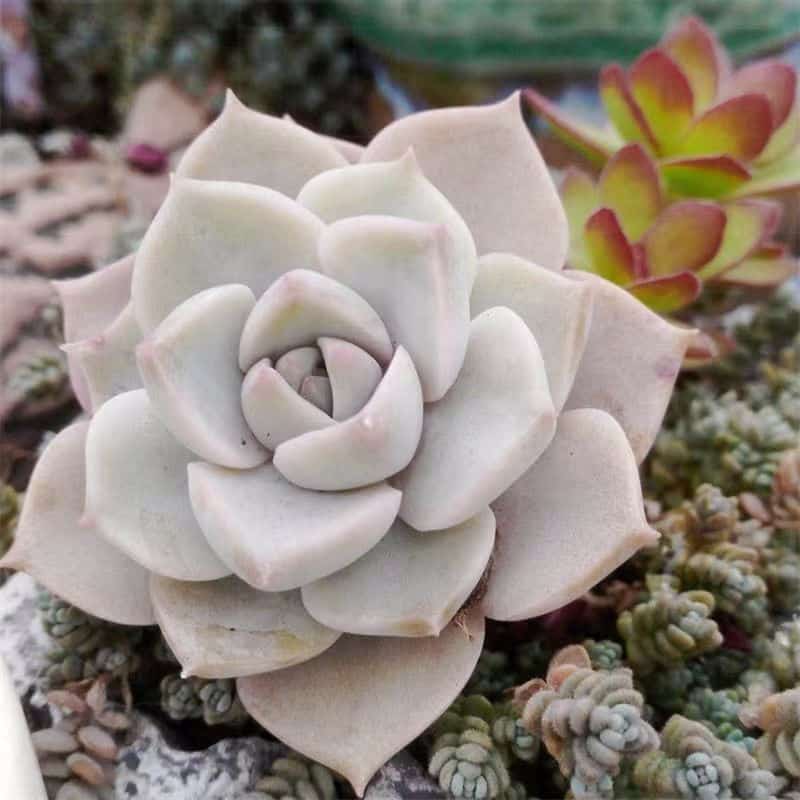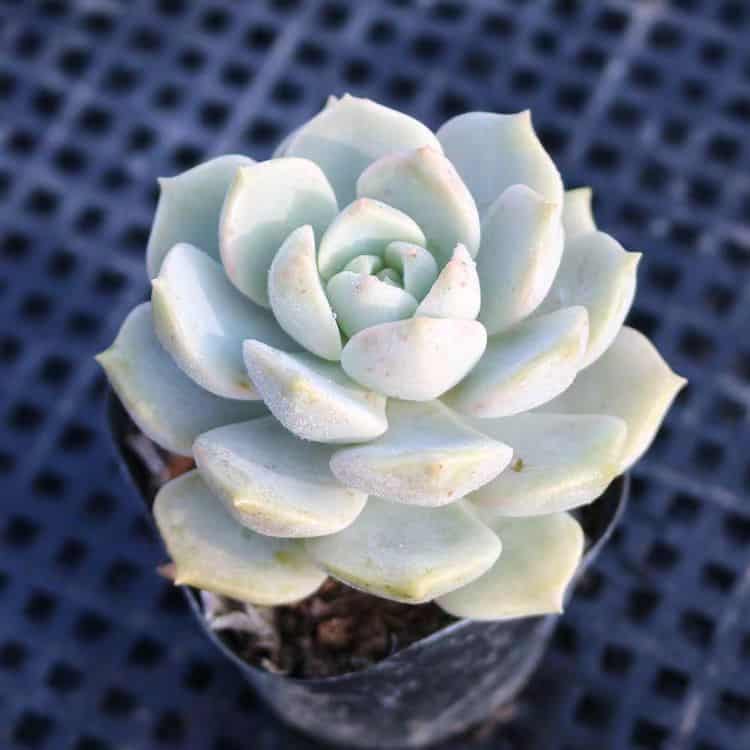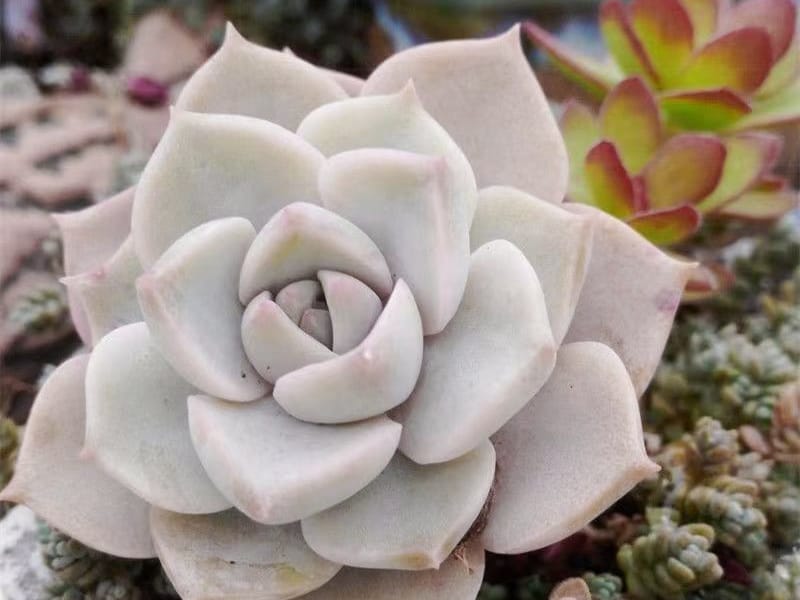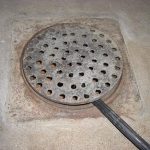Have you ever seen small, beautiful, and colorful plants? If not, then this plant will surely tell you about the beauty hidden in different kinds of plants. Graptoveria Titubans, also known as Porcelain Plant, is a rare and gorgeous succulent with iridescent pink, grey-green, and cream foliage. Graptoveria titubans are usually found according to the light they are exposed to.
Graptoveria titubans is a mixture of two succulents. These two succulents are known as Graptopetalum paraguayense and Echeveria derenbergii.
These succulents originate from dry, desert locations. As they store water in their leaves, they first originated from Africa. The name this plant got was because of its thick leaves filled with sap. The name succulent was formed after the Latin word succus, which means juice or sap.
Many people are amazed by this succulent’s beauty as the color it has is unique. The pattern of this plant makes it very attractive. Because of its uniqueness and attractiveness, many wonder if this certain type of plant could be grown in their backyards.

Caring for the Graptoveria Titubans
Certain conditions must be considered while growing such plants, requiring special treatment.
Sunlight
Graptoveria Titubans requires an adequate amount of sunlight over its growing period. The sunlight that this plant requires should be bright and not filtered, which means that the plant should be kept somewhere where there is direct access to sunlight. If the plant does not receive enough sunlight over time, it will likely become lean, delicate, and lose its color.
However, too much sunlight also destroys the essence of this plant. Strong sunlight causes too much heat and pressure on the plant’s leaves, eventually burning them and ruining the beauty of the plant. Direct exposure also shortens the height of the plant. When stems and leaves burn due to sunlight, the new leaves that come are relatively shorter as the direct sunlight slows the plant’s growth rate. Graptoveria titubans should be kept in the shade or indoors to avoid such problems.
Soil
Porcelain, or Graptoveria Titubans, requires loose, ventilated soil. Soil can be divided into three layers, each necessary for the perfect growth of Graptoveria Titubans. The topsoil is covered on the soil surface for the ornamentation of the plant. The central layer of the soil fixes plants in place and is the source of nutrients for the plant to grow.
The third layer of the soil is necessary to evacuate unnecessary water in the root system and stop the root system from rotting due to water cumulation.
The above requirements were for soil. But this doesn’t end here.
Water
Here comes the most difficult procedure for growing the perfect Graptoveria titubans. Surprisingly, this plant does not require much water. As this plant originally belongs to a dry and humid region, it can last without water for many hours. Watering of this plant should purely depend on state of the succulent: state of the succulent. Graptoveria Titubans show certain types of symptoms when they need water. When in need of water, the leaves of the plants start to curl up a little, indicating a water shortage. Hence, it should be watered then.
Temperature and Humidity
Graptoveria Titubans should be grown in mild temperatures, preferably in spring or fall. A person living in a cold area cannot grow a Graptoveria titubans to its full capacity.
When summers are around the corner, Graptoveria Titubans tend to become dormant or ‘sleepy.’ This is because temperatures rise above 30 degrees centigrade, making the plant function slower because of its mild temperature habit. The same happens in winter. As the temperature falls below 5 degrees centigrade, the plant should be moved indoors to avoid diseases like frostbite. The watering of Graptoveria titubans should be reduced in peak summers and winters.
Fertilizer
Almost 90% of Graptoveria Titubans are grown in a feral environment; hence, they do not require much fertilization. However, for a more colorful and attractive plant, one may add a diluted fertilizer in early summers or early winters.

Propagation
Surprisingly, the propagation process is quite easy and requires minimal effort. You can use the offsets and leaves of your plant for propagation. Wait for the offset/leaf to callous after cutting them, and then plant it in a well drainage soil.
Pests and Plant Diseases
Pests Diseases
The most common pests that invade Graptoveria Titubans are mainly aphids, spider mites, and white butterflies. You can simply sprinkle some medicine on your plant to get rid of them.
Plant Diseases
Bacteria can enter the soil, which causes the root to become useless. To tackle this bacterium, sterilize the soil at least a month before summer as bacteria usually strikes during summers.
Conclusion
The facts mentioned above are completely based on different research and experiences. For someone to grow a healthy and attractive Graptoveria Titubans, they should follow these so that they do not have any issues regarding the growing process. I hope you find growing Graptoveria Titubans interesting rather than troublesome. Enjoy!!




